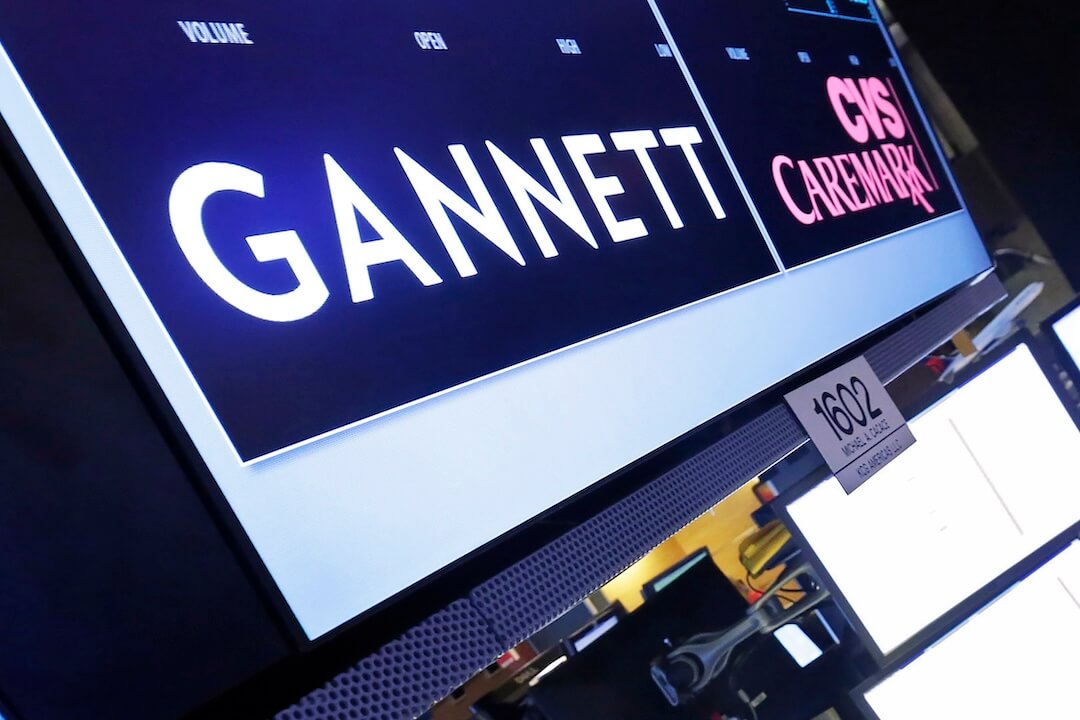Good morning. Today’s newsletter is a team effort from me and my Poynter colleagues. We start today with some thoughts on Jon Stewart by Poynter managing editor Ren LaForme. Take it away, Ren …
It took me three days to finally watch Jon Stewart’s return to “The Daily Show,” and when I did, I tuned in with hesitancy. What if, after more than eight years out of the chair, he’d lost the spark?
Half an hour later, my belly quite literally in pain from laughing, it was clear my fears were unfounded. Stewart recaptured the magic he built during his 16-year tenure as host of the program. As Associated Press media writer David Bauder wrote, “Stewart really wasn’t sitting at his desk at Comedy Central for the last nine years, waiting for someone to turn the lights back on. Yet it almost felt that way …”
But I don’t get why he’s back. Why now, and why Comedy Central?
“The Daily Show” airs Monday through Thursday, but Stewart is only hosting the Monday episodes, with the show’s correspondents taking turns filling in the rest of the week. In addition, Stewart announced that he would only host through the presidential election in November.
What does he hope to accomplish with those 30-something episodes? And why is he back on linear television, which, aside from the NFL, seems to be following newspapers into palliative care?
Stewart offered a weak explanation during an appearance on “CBS Mornings” last week. “I very much wanted to have some kind of place to unload thoughts as we get into this election season,” he said.
That doesn’t seem like a good enough reason. Sure, he tried out the streaming world with Apple TV, where “The Problem with Jon Stewart” saw generally poor ratings before it was canceled in October due to creative differences. But, if unloading his thoughts is his real raison d’être, there are plenty of livelier places these days.
I doubt he’d follow his old sparring partner Tucker Carlson to X (and I don’t blame him for that), but why not TikTok or Instagram or even YouTube, where the intro segment of his first show has almost 9.4 million views, a multiple higher than the 3 million people who tuned in on TV. By returning to Comedy Central and “The Daily Show,” he risks becoming the sad jock who tries to relive his glory days by visiting his high school after graduation. Stewart seems sharp enough to avoid that stench.
So, then, did he have regrets about quitting a year before the 2016 presidential election? Is he nagged by the question of whether he might have made a difference in the result? Probably not.
“Just about everything that I wanted to happen over the 16 years that I was at ‘The Daily Show’ did not happen,” he told “CBS Mornings.”
Does he feel compelled to help out the show, which has been without a host since Trevor Noah, his successor, left in 2022? Is he trying to reach a new generation of audiences in a bid to preserve his relevancy?
If it’s the latter, then I ask again: Why did he return to linear TV?
It’s possible, maybe even likely, that Stewart will succeed and usher in a era of nostalgic homecomings for former TV personalities. Maybe David Letterman, Craig Ferguson and Jerry Seinfeld will convince Rick Moranis to unretire and they’ll put together a season of “Saturday Night Live” for the ages. But even that would feel like a last hurrah before the lights dim further.
It would also be a fundamental misunderstanding of Stewart’s likely success. The “Barbie” movie was a runaway hit. It seems to have inspired a wave of films about toys. But people didn’t like that movie because it was about a toy; they liked it because it was a genuinely lovely film that had a lot to say. Can there be another film like Greta Gerwig’s “Barbie?” Is there anyone else like Jon Stewart?
In February 2015, shortly after Stewart announced he was leaving “The Daily Show,” I polled a handful of my friends who were under 35 years old. Brian Williams had just been suspended from his role at the “NBC Nightly News” for misrepresenting the circumstances of an emergency helicopter landing in Iraq. “Which of these matters most to you?” I asked.
I’ll bet you can guess how my friends answered. Nearly unanimously, I’d add. I expected that response.
When I polled Gen Z colleagues about his return on Wednesday, the responses were mixed. Again, that’s expected. That generation watches television at notably lower rates than other generations, and Stewart would have been in his heyday when a significant portion of them were still pocketing lunch money from their parents.
I suppose there are more straightforward explanations for his return to “The Daily Show.” Did he need dough for a beach house? Does he have a kid in an expensive college? Is it just something to do; a broadcasted fidget spinner for a restless man with razor-sharp wit?
As I watched his second episode this week — not on TV, naturally, but on Paramount Plus a day later — I once again guffawed so loud I worried I would wake up my toddler. I’m interested to see if he can keep it up. But I’m even more interested in another question or two.
Why’d you come back, Jon? And what does it say about the state of television?
Gannett ends 2023 with $27.8 million loss, grows digital revenue

The Gannett logo appears on a monitor at the New York Stock Exchange on Aug. 5, 2014. (AP Photo/Richard Drew, File)
This item was written by Poynter media business reporter Angela Fu.
Gannett grew its digital revenue to 41% of its total revenue last quarter and is hoping to increase that percentage to 55% by 2026 and break even, the company announced Thursday.
Gannett — the largest newspaper company in the country — ended the fourth quarter of 2023 with a $22.9 million loss. Its total loss for fiscal year 2023 was $27.8 million, an improvement from 2022, when it reported a $78 million loss. Executives on the company’s earning call struck an optimistic tone, noting that Gannett had grown its digital audience and revenues. They expect the company to hit its “inflection point” — when revenue flips from declining to growing — near the end of 2024.
“We expect digital revenues to grow approximately 10% versus 2023 and importantly, begin to outpace the declines we see in our legacy revenue streams,” CEO Mike Reed said during an earnings call with investors. “Our digital revenue strategy, and the foundation for anticipated future growth, is to expand our audience and improve engagement and improve the platform monetization at each point in the customer journey with us.”
Gannett grew digital revenue 2.9% year-over-year to $277.1 million last quarter. Average revenue per user was a little more than $28 a year, suggesting many subscribers benefit from deeply discounted rates. Gannett had roughly 2 million digital subscribers last quarter, up 1.6% from the previous quarter.
In an effort to cut costs, Gannett switched to mail delivery in 46 of its smaller markets last year and has plans to convert another 53 markets in the first half of 2024, CFO Doug Horne said. Mail delivery is roughly 50% of the cost of carrier delivery. The company also plans to reduce its printing plants. The Indianapolis Star announced last month that it will close its production facility in April, resulting in approximately 90 layoffs.
Gannett repaid more than $140 million of debt in 2023 and now owes roughly $1.1 billion from its 2019 merger with GateHouse. Real estate sales have been a key part of its debt repayment strategy, and the company expects another $45 million to $50 million in real estate and asset sales in 2024. Horne said the company is “critically assessing all office space” outside of its largest markets. That includes its main office in McLean, Virginia; the company will move its headquarters to an existing location in New York City.
Gannett stock closed at $1.99 a share Thursday afternoon, down nearly 10% from the previous day’s close.
Gannett’s 2024 priorities: ‘rebooting’ small newsrooms and keeping voters informed
This item was also written by Poynter’s Angela Fu.
Gannett will focus on “rebooting” its smallest newsrooms and keeping voters informed in 2024, chief content officer Kristin Roberts said on an earnings call Thursday.
Last year, Gannett focused on “staying attuned” to audience preferences, especially around college football and high school sports, to grow pageviews and engagement, Roberts said. The company had 187 million average monthly unique visitors last quarter, up 4.3% year-over-year. Gannett also experimented with newsletters in its smaller newsrooms — a strategy it plans to continue this year.
“Our reporters combined a first-person voice with a newsletter approach that invited readers to join them in experiencing their community firsthand,” Roberts said. “The results were remarkable and gave us the confidence to boldly expand this strategy. We’re hiring more journalists in communities that, like the pilot sites, have lost local news reporters, and we’re converting more of our smaller newsrooms across the country to take advantage of the engagement rate, reader satisfaction and retention that the newsletters offer.”
Gannett is also investing in its elections coverage, which Roberts said will focus on serving voters. The company is creating voter guides in more than 100 cities and will be launching an email course to prepare readers to vote.
“The USA Today Network is committed to making the voter the VIP of our election strategy,” Roberts said. “We will help readers, viewers and listeners become more informed and ready to make the best choices for themselves and their families at the ballot box.”
Roberts took the helm last March, after the company underwent two rounds of mass layoffs and several top executives resigned. Since then, Gannett has hired more than 200 journalists, and Roberts has been vocal about her desire to invest in local journalism. In a story announcing Gannett’s plan to invest $2 million into the Indianapolis Star’s newsroom and business team, Roberts said she had “maximum ambition for local journalism.”
Many unionized workers at Gannett have been skeptical of the company’s commitment to local journalism. Some unions have spent years negotiating contracts with the company, which they argue is underpaying its workers. One concern for many unions has been Gannett’s use of artificial intelligence.
In response to an investor question during the earnings call Thursday, CEO Mike Reed said the company will not use AI to replace journalists or publish content. Instead, it aims to use AI to increase productivity and explore new monetization opportunities.
“We’re not using these tools to replace journalists or to publish content,” Reed said. “We’re using them more behind the scenes to help our journalists become more efficient, leading to more time for each journalist to be able to create more content.”
News organizations have been exploring deals with AI and tech companies, and Reed said he expects Gannett to eventually sign some, though he “can’t predict the timing of them at this point.”
“I can’t tell you whether it’s next month, next year, or three years when we start to really see these licensing deals come to fruition,” Reed said. “But we do believe they will because our content is copyright protected, and this content’s really important to a lot of these AI technologies.”
Top 25 U.S. papers in print circulation
For this item, I turn it over to Poynter media business analyst Rick Edmonds.
British trade site Press Gazette is out this week with its annual list of the top 25 U.S. newspapers by average daily print circulation. Once again The Wall Street Journal leads the list with 552,000. The New York Times comes in second with a little less than half that — 268,000. For these largest of the country’s 1,200 or so newspapers, that amounts to a decline of 14% in a single year, Press Gazette says, a number consistent with what publicly traded companies have said in their quarterly financial reports.
The methodology has some important flaws. It makes no attempt to factor in paid digital totals, which are difficult to obtain and calculated in inconsistent ways. At a time when nearly all these publications are racing to switch to a digital first business model, that’s no small exclusion. Also, Sunday circulation is both a bigger number than average daily, and some would argue more important to advertisers since the Sunday edition draws the lion’s share of ad buys.
Still, a glance at a table of the numbers, if you haven’t been watching closely, shows just how far leading metros have fallen. The Boston Globe, The Dallas Morning News and The Arizona Republic all hover around 50,000 in areas with more than a million households each.
And now for more media tidbits, news and links for your weekend review …
- Vice Media announced late Thursday that it will stop publishing content on its main website and will cut hundreds of jobs. The news comes after its owner, Fortress Investment Group, could not sell the digital publisher and its various brands. The New York Times’ Benjamin Mullin wrote, “Vice was in rough shape before this planned spate of cuts. The company has been periodically put up for sale over the last two years, as long-promised profits failed to materialize.” In a memo obtained by The Wall Street Journal’s Alexander Saeedy and Alexandra Bruell, Vice chief executive Bruce Dixon told staff, “It is no longer cost-effective for us to distribute our digital content the way we have done previously.” Dixon added that Refinery29, the company’s women’s-focused site, would continue to operate. It could end up being sold. Dixon then wrote, “With this strategic shift comes the need to realign our resources and streamline our overall operations at Vice. Regrettably, this means that we will be reducing our workforce, eliminating several hundred positions.” Check out the Journal and Times stories for more details.
- The Tampa Bay Times’ Justin Garcia, Dan Sullivan and Jay Cridlin with “Tampa media figure Tim Burke indicted on conspiracy charges.” Burke was charged with 14 federal crimes related to alleged computer hacks at Fox News.
- And the Tampa Bay Times’ Kirby Wilson has “Who is Tim Burke? How the feds cracked down on the Tampa media figure.”
- G/O Media announced it has launched a French version of its business site Quartz and will be opening a French version of tech publication Gizmodo and German versions of Quartz and Gizmodo later this quarter. The company operates international versions of several of its other brands, including A.V. Club, Deadspin and Kotaku. The translations for the new sites will be automated. G/O Media made headlines last year when it laid off the Spanish-language staff at Gizmodo en Español and replaced them with AI-powered translations.
- The New York Times’ Sapna Maheshwari and Mike Isaac with “Instagram’s Uneasy Rise as a News Site.”
- Back in 2021, the MyPillow guy Mike Lindell, a fierce Donald Trump supporter, offered a challenge: “Prove Mike Wrong.” If anyone could disprove his claim that he had data saying the 2020 election was rigged, Lindell would give them $5 million. Well, guess what? A federal judge ruled Lindell owes a Nevada man $5 million. The Washington Post’s Praveena Somasundaram has more.
- Media Nation’s Dan Kennedy with “The Boston Globe names a new president and sets a paid circulation goal of 400,000.”
- The Athletic’s Andrew Marchand reports that Jac Collinsworth is out as NBC Sports’ play-by-play voice on Notre Dame football games. Dan Hicks is expected to replace Collinsworth. Jason Garrett will stay on as the color analyst. Collinsworth, the son of “Sunday Night Football” analyst Cris Collinsworth, will remain with NBC Sports, working on such things as the “Football Night in America” pregame show, college football and basketball on Peacock, and on NBC’s Olympics coverage this summer.
- Thanks to Muck Rack for highlighting this story: For Smithsonian Magazine, Jordan Michael Smith with “Inside the Biggest Art Fraud in History.”
- Comedian Shane Gillis is hosting “Saturday Night Live” this weekend. You might recall Gillis was hired to be a cast member on the show in 2019, but was fired almost immediately (and without ever appearing on the show) when past racist remarks were uncovered. This story is for Los Angeles Times subscribers only, but it’s an interesting piece from Seth Simons: “Shane Gillis, who was fired by ‘SNL’ over bigoted remarks, is hosting. What changed?”
More resources for journalists
- Delve more deeply into your editing skills with Poynter ACES Intermediate Certificate in Editing. Start anytime.
- Essential Skills for Rising Newsroom Leaders (Seminar) (May) — Apply by March 26.
- Lead With Influence (Seminar) (June) — Apply by May 6.
Have feedback or a tip? Email Poynter senior media writer Tom Jones at tjones@poynter.org.











It’s a bigger platform. 40K-50K on AppleTV vs 1.5mil on Daily Show. If your goal is to get people thinking again, you want the opportunity that gets the most eyes on you.